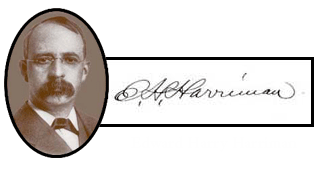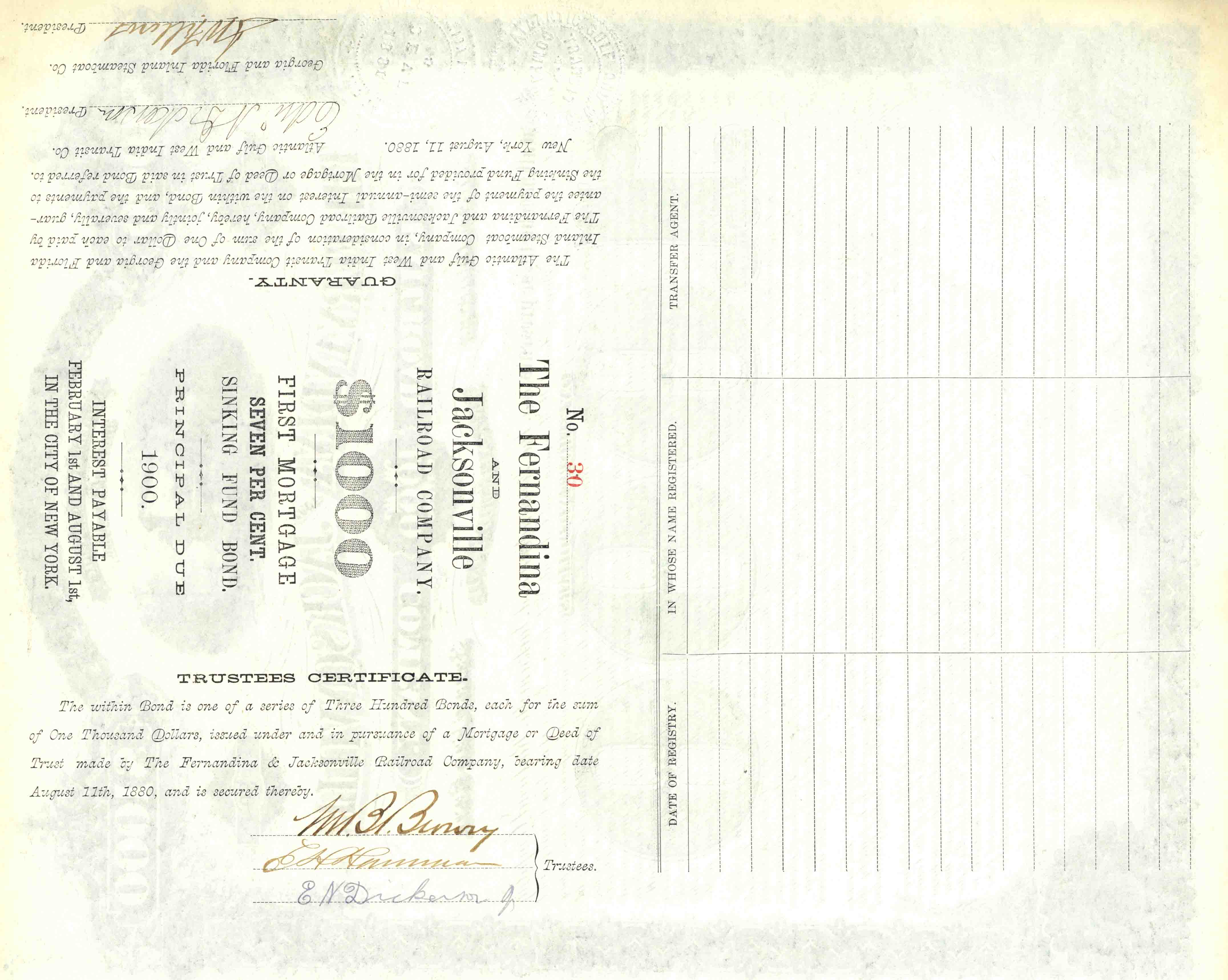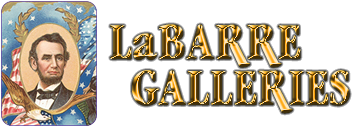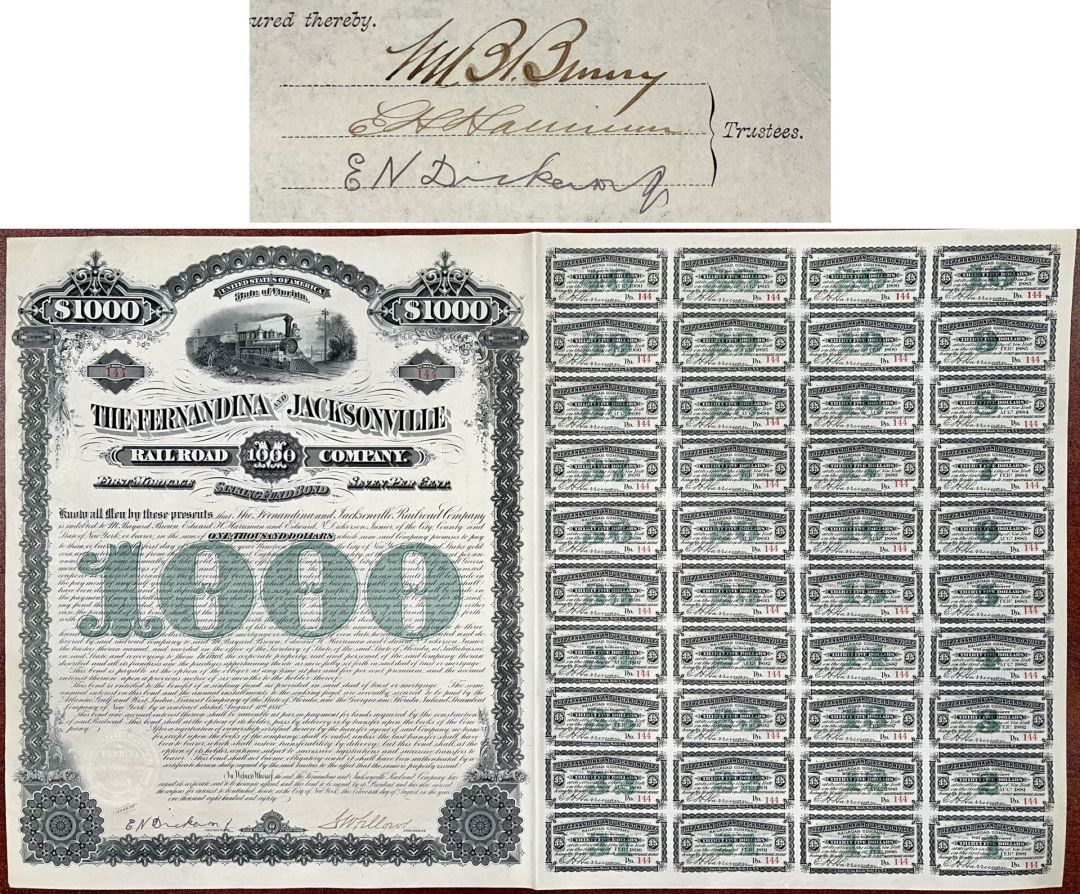Fernandina and Jacksonville Railroad Bond signed by E. H. Harriman - 1880 dated Autograph Railway Bond (Uncanceled)
Inv# AG1010 Bond

Edward Henry Harriman (1848-1909), Self-confident and ruthless, he spared neither friend nor foe if they blocked his plans. He was President of the Union Pacific. He was worth $400 million at the turn of the century. His genius as an administrator made him one of the great railway builders of all time. This 1880 Fernandina & Jacksonville Railroad bond is fully issued, uncanceled, has all 60 coupons, is signed and sealed three times by officers of 2 railroads and a steamboat company. Harriman signs at back with other trustees. Beautifully engraved by American Bank Note and in Superb Condition. Read more about Harriman at https://en.wikipedia.org/wiki/E._H._Harriman
In relation to the Fernandina and Jacksonville Railroad, the First Coast Railroad (reporting mark FCRD) is a class III railroad operating in Florida and Georgia, owned by Genesee and Wyoming Inc. The name is derived from its area of operations around the First Coast of Florida. The FCRD was founded in April 2005 to lease 32 miles of a former Seaboard Air Line Railroad from CSX. It stretches east from Yulee to Fernandina Beach, Florida and north from Yulee to Seals, with a connection at Yulee to CSX. The north-south line, formerly the Seaboard Air Line main line before it was abandoned by the combined Seaboard Coast Line Railroad in favor of the ex-Atlantic Coast Line Railroad main line to the west, connects to the St. Marys Railroad at Kingsland. The line is abandoned north of Seals.
The line from Yulee north into southern Georgia was built in 1894 by the Florida Northern Railroad. It was an extension of the Fernandina and Jacksonville Railroad north to Savannah, Georgia to connect with the South Bound Railroad. The line from Yulee to Fernandina Beach was completed in 1861 by the Florida Railroad which connected Fernandina Beach with Cedar Key. The Florida Railroad, Florida Northern Railroad, Fernandina and Jacksonville Railroad, and the South Bound Railroad were all eventually absorbed by the Florida Central and Peninsular Railroad by 1893. Read more at https://en.wikipedia.org/wiki/First_Coast_Railroad
Harriman is mentioned in the movie Butch Cassidy and the Sundance Kid (1969), as the commercial baron whose agents become the title characters' nemeses. In the film's second train robbery, a railroad employee ascribes his refusal to cooperate with the robbery to his obligations to Harriman personally, and one of Butch and Sundance's intimates describes Harriman's hiring of famed outlaw-hunters to track down the gang's leaders. Read more at https://en.wikipedia.org/wiki/E._H._Harriman
A bond is a document of title for a loan. Bonds are issued, not only by businesses, but also by national, state or city governments, or other public bodies, or sometimes by individuals. Bonds are a loan to the company or other body. They are normally repayable within a stated period of time. Bonds earn interest at a fixed rate, which must usually be paid by the undertaking regardless of its financial results. A bondholder is a creditor of the undertaking.










Ebay ID: labarre_galleries